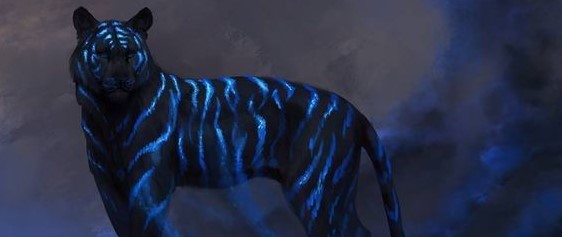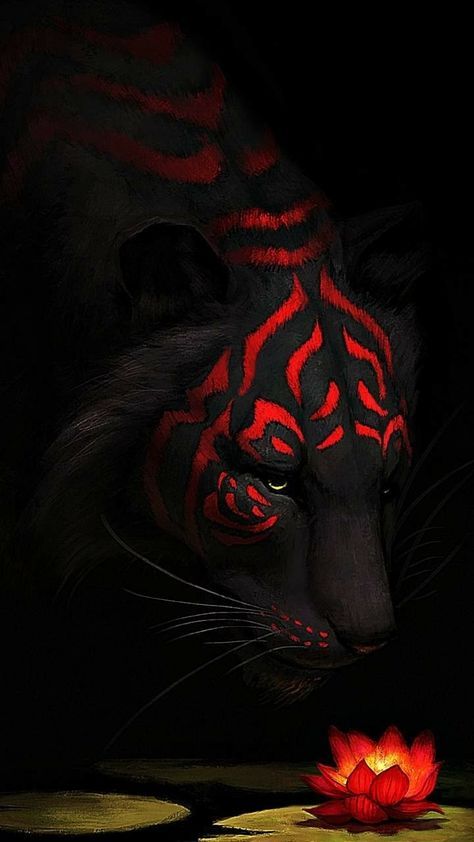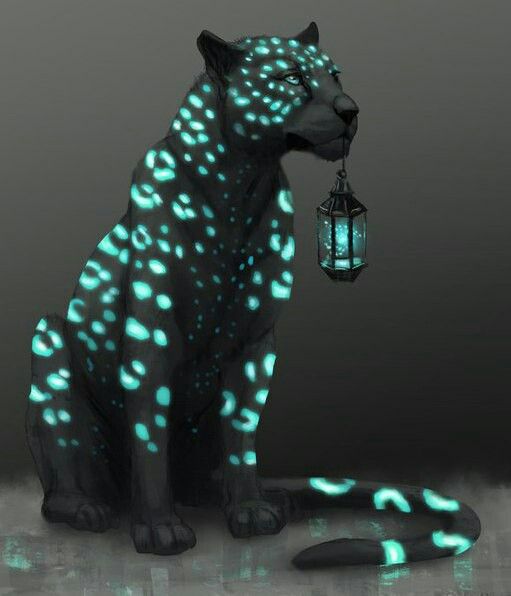Lilausa
One of the sacred animals of the Sisters, being the companion of the Lily Forebearers and Polaris family, they roam the tundra of the Korrlu district as the top predator.
Basic Information
Anatomy
Due to the animal being a creation of Poppy, a bright blue shines from the spots on their fur. Typically a four legged hunter species, the Lilausa uses its connection to the knowledge and beauty Sister to hypnotise its prey.
Biological Traits
Female Lilausa possess spots on their skin while the males have more strip like patterns. Both sexes are born without their spots/strips and do not acquire them until they are adult, instead just shining a beautiful white color, which is why most people domesticate them as children.
Growth Rate & Stages
A Liluasa typically has a very long adolescence period. Since they live to be hundreds of years old this species typically takes a full Rhydan life expectancy, 60-70 years, before they are adults.
Ecology and Habitats
Dietary Needs and Habits
Biological Cycle
The Lilausa's strange connection to the Hanula
For the Lilausa that have been domesticated and live within the Rhosaya and Primiea district, during the time of year known as the Hanula migration period, the Lilausa's spots change from their bright blue to an orange/red hue. No one is sure why only these Lilausa do this but it might have something to due with past Forebearer history.
Additional Information
Domestication
Typically Lilausa are domesticated within the Korrlu and Anniy districts, where they are used by ethnic Atlans as a class symbol. However, some Lilausa are in the Rhosaya and Primiea districts as well.
Average Intelligence
Due to being creation of the Sister of knowledge, they have an increased intelligence than almost all other species on Rhydar, apart from Rhydans themselves.
Perception and Sensory Capabilities
Lilausa have the ability to sedate and hypnotise any life form that is less intelligent than itself with the blue glow coming from it spots. This is why Rhydan and the sacred animals of the Sisters are unaffected by this.
Civilization and Culture
Beauty Ideals
Typically young Lilausa are domesticated more than adults due to them not having that unbreakable loyalty to the Lily Forebearers, as well as having glow white fur which is much more appealing than their grey fur in adulthood.
Gender Ideals
Female Lilausa are chosen more often than males due to their more polite nature and their slimmer and smaller shape.
History
Before Poppy's siege on Rhydar, the Lilausa were the closest thing that she had to children of her own. With her near destruction of the world however, she was punished severely, being stripped of her beauty and her Lilausa would now be servants to any Lily Forebearer who would come across one. So if any Rhydan has Lily Forebearer in their DNA, the Liluasa live to serve them.
Common Myths and Legends
It is said that no matter how long someone has had their Lilausa for, they will always switch allegiance to a Lily Forebearer.
Scientific Name
KerRis Poppy
Lifespan
Males (400 - 500 years) Females (700 years)
Average Height
Males( 1.5 meters)
Females (1 meter)
Average Weight
Males (500 lbs)
Females (200 - 300 lbs)
Average Length
Males (2.5 meters)
Females (2 meters)
Body Tint, Colouring and Marking
Geographic Distribution
Discovered by








Comments